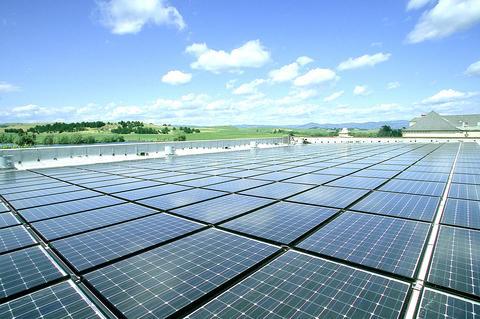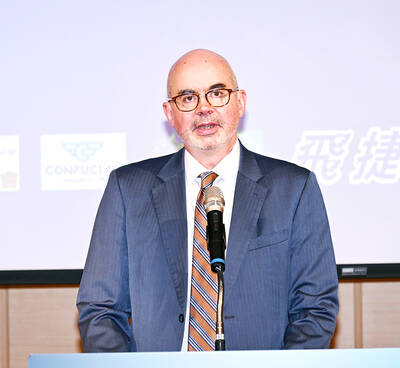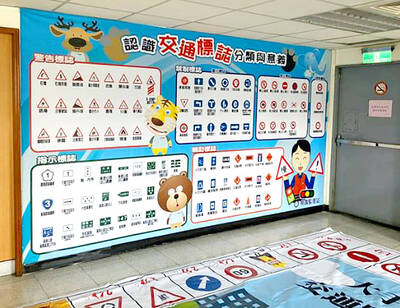Johnson & Johnson, an icon of American corporate culture, is showing a growing interest in a technology once associated with backwoods cabins and pocket calculators. Like a number of other large companies, Johnson & Johnson has begun to generate its own power from the sun.
Solar power has evolved from being an expensive, pie-in-the-sky technology to one that is finally beginning to make business sense. Recent electricity shortages in California, the continuing gyrations in energy prices overall, and new state and federal incentives are among the reasons for companies' efforts to start or expand their use of the technology.
On a blustery fall afternoon, the solar installation on the roof of the US headquarters of Johnson & Johnson's Janssen Pharmaceutica Products unit in Titusville, New Jersey, is producing 245kW of electricity, enough to power 245 homes. At their peak, the 2,850 solar panels can produce about 500kW of energy, making this one of the largest solar installations on the East Coast. The system provides about 10 percent of Janssen's annual electricity needs.

PHOTO: NY TIMES
While Johnson & Johnson has corporate policies that support the use of green power, a large part of the decision to install the system, as well as three others on its buildings in New Jersey and California, was economic.
"We looked at solar power two or three years ago, but we never got into the ballgame because the incentives were not there," said John Subacus, Janssen's director of facility management. "But new incentive programs made the project financially neutral, and we felt it was the best time to jump in and do something good for the environment."
The company said 57 percent of the cost of the Titusville system was covered by state and federal programs promoting solar energy use.
Companies including Toyota Motor Sales USA, Lowe's, BJ's Wholesale Club, Whole Foods Market and Domaine Carneros, a winery, have installed solar panels on some of their buildings. Not only will many of these systems pay for themselves within a decade, but those that do will then produce essentially free energy for another 15 years or more, providing as much as 40 percent of the energy needs of these businesses.
On Janssen's roof, silicon solar panels the size of ceiling tiles snake around fans and ventilation ducts, absorbing the afternoon sun. As the sun hits each panel, the silicon molecules produce electrical charges -- a positive charge on one side of the panel and a negative one on the opposite side. Pipes containing wiring from each panel lead to a small shed behind the building, where the solar-generated power is converted from direct current to alternating current. It then flows into the building's electrical system.
"It's been performing ahead of expectations," Subacus said. "Everyone involved in the program is happy with it."
Businesses often look for a two to three-year payback on capital investments. Solar power cannot yet provide that; the average commercial installation is expected to pay for itself in five to nine years. Subacus said that Janssen's would take 20 years to pay for itself, much longer than average, because he is assuming that energy prices will rise only 4 percent annually; if they climb faster, the system will pay for itself sooner.
Solar power accounts for only three-hundredths of 1 percent of all electricity generated globally, said Lisa Frantzis, director of renewable and distributed energy at Navigant Consulting in Chicago. Yet sales of equipment are growing quickly. Since the 1990s, the market for products that capture electricity from the sun has grown about 20 percent a year, In the last three years, the growth has accelerated to about 33 percent a year.
That impressive growth rate has lured investments from large corporations, many of which are better known for electronics or even pumping oil. Sharp is the world's largest provider of solar products, followed by the BP Solar unit of BP; Kyocera; the Shell Solar unit of Royal Dutch/Shell; and Sanyo.
But solar power remains a small part of the balance sheet for many of these companies. BP Solar had US$300 million in revenue last year, compared with BP's total of US$178.7 billion. Nonetheless, Steve Westwell, president and chief executive of BP Solar, said he wants to be ready when solar power takes off.
"The solar market is showing dramatic growth, which any corporation should be excited about," Westwell said. "It is increasingly looking like the right thing to do."
Solar energy has also been lucrative for smaller companies. The PowerLight Corp, a company in Berkeley, California, with 100 employees, has made Inc magazine's list of the 500 fastest-growing companies in America for four consecutive years. The company says its annual revenue has grown to US$28 million from US$800,000 in the five years through last year.
PowerLight, which installed Johnson & Johnson's system, specializes in grid-connected solar energy. These systems draw electricity from the traditional power grid when they need it, and push electricity back into the grid for a credit when they don't.
That flexibility has appealed to a growing number of businesses. In 1999, grid-connected systems in the US produced 4 megawatts of power. By the end of the year, Frantzis estimates, they will account for 65MW of electricity.
Tom Dinwoodie, the chief executive of PowerLight, said: "Solar has a bad rap from back in the 1970s. But it is no longer on the fringe, and it feels great."
Solar rebate programs offered by states have also drawn interest. The 15 states that offer rebates for renewable energy projects have pledged US$4.4 billion to them from 1998 to 2012, Frantzis said.
In New Jersey, of the 200 projects completed or under way since its renewable energy program began in 2001, some 150 have been approved in the last six months alone. California has had a similar rush: 44 percent of its 530 applications were made this year. For commercial systems in New Jersey, rebates are as high as 60 percent. In New York, they are as high as 70 percent, with a cap of US$500,000.
Residential solar systems are eligible for credits similar to those given to businesses. In New York and New Jersey, as much as 70 percent of the cost of a home grid-connected system can be recouped from the state.
Many programs intended to encourage solar use by businesses have started in the last two years and are just now drawing attention as companies learn that the systems can be a good investment.
Domaine Carneros, a Northern California subsidiary of the French winemaker Champagne Taittinger, installed a solar system this summer. It produces 120kW of electricity, or 40 percent of the winery's energy needs. The entire system cost US$800,000; the company received a 50 percent rebate from the state of California, along with some federal and state tax credits, and it can accelerate the depreciation on the investment over five years.
After those benefits, the final cost of the system is only US$200,000, said Eileen Crane, Domaine Carneros' president and winemaker. At that price, the company estimates that the system will pay for itself after four years.
"I didn't expect it to be economically viable," Crane said. "I thought I would have a hard sell to the owners back in France. But the more I looked at it, the more it became clear to me that not only was it good environmental stewardship, but that it made full economic sense."
Unlike other renewable power sources, solar panels provide the most electricity in the middle of the day, when it is needed most. At such peak times, utilities charge businesses a premium for electricity, helping to make solar that much more attractive.
That was a significant factor in the decision by Toyota Motor Sales USA to install solar panels on a 64,500m2 building in Torrance, California, said Sanford Smith, Toyota's corporate manager for real estate and facilities.
"Solar power allows you to stabilize your power purchasing so you won't be buying peak power produced during the middle of the day," Smith said.
The system provides 20 percent of the building's electricity. Toyota is evaluating the project and is likely to expand its use of solar energy, he said.
Even though solar power is on a growth curve in the US, the technology is spreading even faster in Japan and Germany. In Japan, higher prices for other types of energy have bolstered the popularity of solar power. There are fewer than 5,000 grid-connected solar setups in the US, compared with 40,000 systems in Japan, most of them residential, said Glenn Hamer, executive director of the Solar Energy Industries Association in Washington.
Other countries are also quickly developing uses for solar technology, Frantzis said. In 1999, the US accounted for 17 percent of the global solar market. Last year, it accounted for only 13 percent.
Nonetheless, Frantzis is optimistic about solar power's future, even in the US. "People see that eventually it is going to get there," she said. "Right now it is not so far off."

GAINING STEAM: The scheme initially failed to gather much attention, with only 188 cards issued in its first year, but gained popularity amid the COVID-19 pandemic Applications for the Employment Gold Card have increased in the past few years, with the card having been issued to a total of 13,191 people from 101 countries since its introduction in 2018, the National Development Council (NDC) said yesterday. Those who have received the card have included celebrities, such as former NBA star Dwight Howard and Australian-South Korean cheerleader Dahye Lee, the NDC said. The four-in-one Employment Gold Card combines a work permit, resident visa, Alien Resident Certificate (ARC) and re-entry permit. It was first introduced in February 2018 through the Act Governing Recruitment and Employment of Foreign Professionals (外國專業人才延攬及雇用法),

RESILIENCE: Deepening bilateral cooperation would extend the peace sustained over the 45 years since the Taiwan Relations Act, Greene said Taiwan-US relations are built on deep economic ties and shared values, American Institute in Taiwan (AIT) Director Raymond Greene said yesterday, adding that strengthening supply chain security in critical industries, enhancing societal resilience through cooperation and deepening partnerships are key to ensuring peace and stability for Taiwan in the years ahead. Greene made the remarks at the National Security Youth Forum, organized by National Taiwan University’s National Security and Strategy Studies Institution in Taipei. In his address in Mandarin Chinese, Greene said the Taiwan-US relationship is built on deep economic ties and shared interests, and grows stronger through the enduring friendship between

CAUTION URGED: Xiaohongshu and Douyin — the Chinese version of TikTok — are tools the Chinese government uses for its ‘united front’ propaganda, the MAC said Mainland Affairs Council (MAC) Minister Chiu Chui-cheng (邱垂正) yesterday urged people who use Chinese social media platforms to be cautious of being influenced by Beijing’s “united front” propaganda and undermining Taiwan’s sovereignty. Chiu made the remarks in response to queries about Chinese academic Zhang Weiwei (張維為) saying that as young Taiwanese are fond of interacting on Chinese app Xiaohongshu (小紅書, known as RedNote in English), “after unification with China, it would be easier to govern Taiwan than Hong Kong.” Zhang is professor of international relations at Shanghai’s Fudan University and director of its China Institute. When giving a speech at China’s Wuhan

The Ministry of Transportation and Communications yesterday said that it would redesign the written portion of the driver’s license exam to make it more rigorous. “We hope that the exam can assess drivers’ understanding of traffic rules, particularly those who take the driver’s license test for the first time. In the past, drivers only needed to cram a book of test questions to pass the written exam,” Minister of Transportation and Communications Chen Shih-kai (陳世凱) told a news conference at the Taoyuan Motor Vehicle Office. “In the future, they would not be able to pass the test unless they study traffic regulations